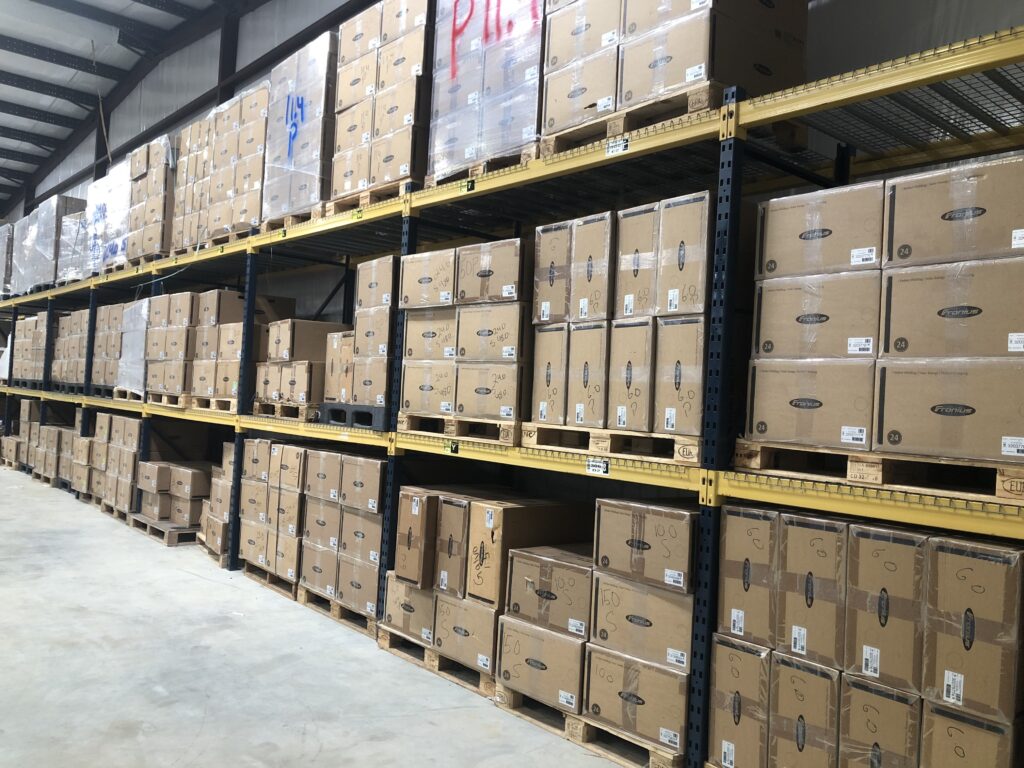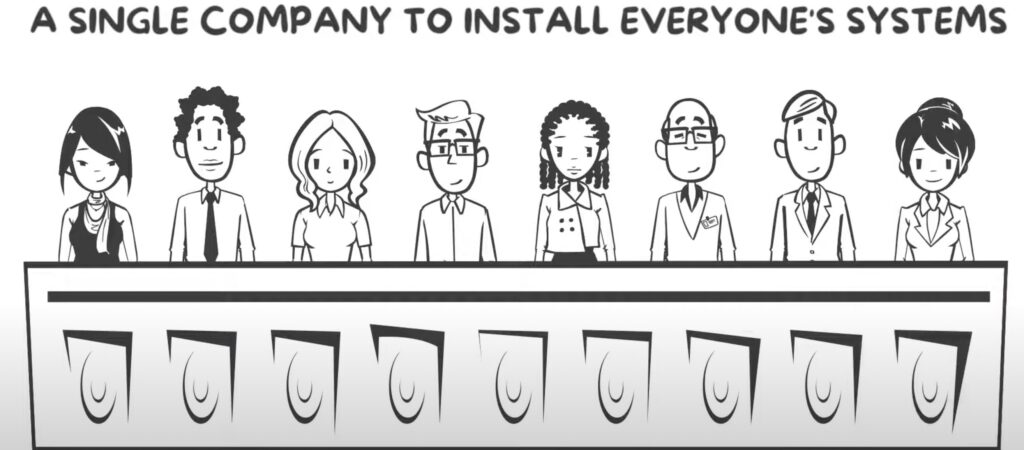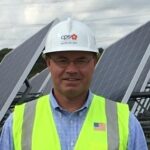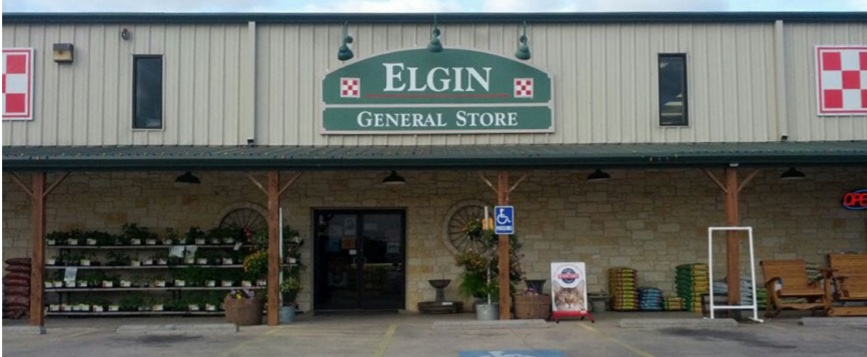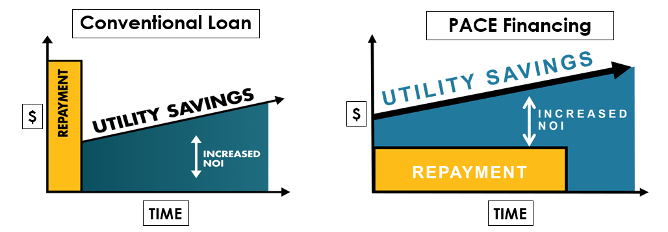Sep 20, 2021 | News
By Jack Maedgen,  Former TXSES intern
Former TXSES intern
Access to clean and affordable energy is an essential part of modern life. Cooking, cleaning, doing homework at night, running the air conditioning in the hot Texas summers, and much more all necessitate reliable energy access. Yet, for many families, these essentials transform into luxuries because they experience what experts refer to as energy poverty or the lack of access to energy services due to high prices or insufficient supply.
Although recent attention has focused on energy poverty, it’s frequently framed as a problem exclusive to the developing world. However, in the U.S., a sizable portion of households struggle to afford their energy needs. Based on data from the Energy Information Agency’s (EIA) 2015 Residential Energy Consumption Survey, 11% of households had to keep their homes at unhealthy or unsafe temperature levels, 14% of households received energy service disconnection notices, 22% had to limit spending on necessities to afford their energy bill, and finally, 31% — nearly one in three households — had trouble paying energy bills.1
How is it that such a high percentage of Americans experience energy poverty?
While an important aspect of the answer boils down to the ratio between income and energy costs, there are many reasons why families find it difficult to afford energy costs. According to the Texas Energy Poverty Research Institute (TEPRI), housing type and quality as well as inadequate access to energy-efficient technology are other factors that contribute to energy poverty.2
Low-income neighborhoods contain the highest percentages of families experiencing energy poverty. Houses in these neighborhoods typically have sub-standard installation and are often built on “a least initial-cost construction strategy” according to TEPRI. This means that low-income individuals not only have less money to spend, but relative to those in more affluent neighborhoods, the same amount of money doesn’t stretch as far due to energy inefficiencies.
Another study found that stores in low-income neighborhoods are less likely to sell energy-related products like LED light bulbs.3 The high cost of replacing appliances with newer energy-saving alternatives remains prohibitive to people experiencing energy poverty. This creates a confluence of factors that contribute to energy poverty’s prevalence. Moreover, it’s unlikely that people experiencing energy poverty can make quick fixes to reduce the financial strain since that often comes at the cost of making costly improvements or relocating.
Thankfully, governments and community-based organizations have established an increasing number of programs that attempt to remedy these inequities. At the federal level, the Weatherization Assistance Program (WAP) and the Low-Income Home Assistance Program (LIHEAP) offer some assistance, although critics allege that these programs are underfunded and underutilized. Governments have created programs that attempt to educate consumers on energy-saving behaviors with mixed success. Finally, partnerships with community-based organizations like churches, universities and non-profits have been shown to improve public outreach and program effects.
The role of renewable energy, notably solar, is perhaps one of the most important aspects of the response to energy poverty. The City of Baltimore has demonstrated the potential for solar to serve low-income populations that are most likely to experience energy poverty.4
As the price of distributed solar becomes more affordable, the number of homeowners who can invest in solar increases. Often, government programs are key to making solar viable for low-income homeowners. Additionally, community solar models can dramatically increase the number of people who can share in solar’s benefits. The future involves scaling up these efforts and innovating new ways to make solar accessible to more consumers.
While it may require significant up-front investment to address energy poverty, the cost of doing nothing is even more significant. Currently, nearly one-third of Americans struggle with meeting costs associated with their energy needs. Additional research finds that energy price increases could push thousands more into poverty.
Energy poverty is also associated with poorer health and wellbeing outcomes. According to TEPRI, “high energy burdens are linked to significant negative non-energy effects” including “incidences of increased illness and morbidity, derived from asthma, depression, anxiety, diabetes, stroke, and heart attack have all been attributed to low-income energy burdens.”5
Addressing energy poverty is ultimately a social policy. However, evidence from other countries and existing programs in the United States prove that it’s possible if there is political will. Within the response lies an opportunity to improve the lives of those experiencing energy poverty with renewable energy. Now, it’s up to solar to help lead the way forward.
1 https://bit.ly/38FLuHq
2 https://bit.ly/3h3sB5P
3 https://bit.ly/3kX7qn8
4 https://bit.ly/3yK6ffV
5 https://bit.ly/3h3sB5P
Jack Maedgen is a junior Government and History major at the University of Texas and an Austin native. He’s been a part of the University Interscholastic League (UIL) and The Texas Orator. Jack was an intern for TXSES during the 2021 spring and summer semesters.
Sep 20, 2021 | News
Since 2010, The PowerStore in Alvarado, Texas and recently in Mooresville, North Carolina, has supplied solar power and storage solutions to customers in the U.S., Central America and the Caribbean Islands. A Tier 1 authorized distributor for many of the world’s leading solar panel manufacturers, The PowerStore is also a TXSES Platinum Business Member. We caught up with Jim White, founder and CEO, to learn more about The PowerStore. These up-close and personal industry conversations are one of the benefits of a TXSES Platinum Business membership.
TXSES: What or who inspired you to be in the solar industry? What’s so unique about being a Tier 1 solar module manufacturer distributor?
Jim: I have been involved in the Solar Industry for over 30 years as an engineer. I was looking for a way to use my product and design knowledge to assist installers, while being able to supply them with the best options currently available on the market. As a solar distributor, we’re committed to offering exemplary customer service and high-quality products. Tier 1 solar module manufacturers have distinct criteria defined as those that:
- Have been producing solar panels for five years or more
- Are either publicly listed on a stock exchange or have a strong and stable balance sheet;
- Have fully-automated production and a high degree of vertical integration
- Invest significantly in marketing their brand; and
- Enjoy a highly-regarded reputation within the industry for quality and service.
TXSES: As a family-owned business, has your workforce increased over the years? What kinds of skills do you look for?
Jim: We’ve been in business since January 1, 2011. And yes, our workforce has grown steadily over the years. Today, we have 23 team members at our two locations in Texas and North Carolina with skills ranging from sales, marketing, delivery drivers, inventory control and management. While our personnel needs are always dependent on the market, our greatest need right now is for team members in our operations and logistics departments.
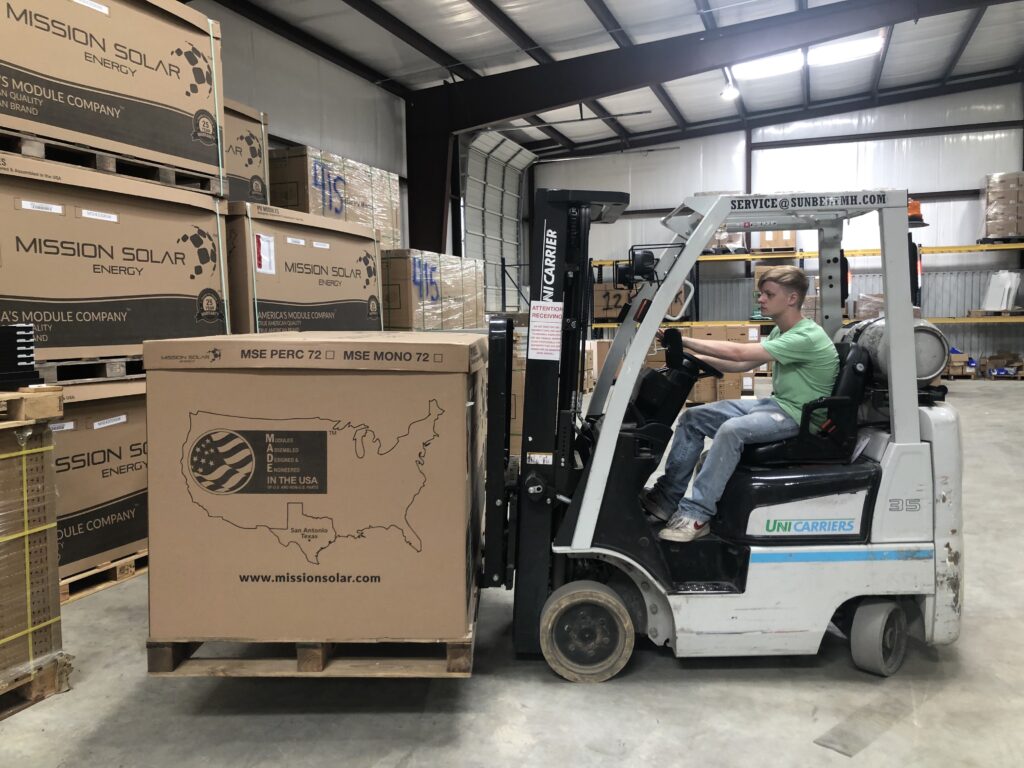
Credit: The PowerStore
TXSES: Given the twin impacts of Winter Storm Uri and climate change, have you seen an uptick in consumer demand? Are you able to maintain panel and battery inventories?
Jim: Yes, we’re seeing increased demand for both solar panels and storage. Maintaining panel and battery inventories has been challenging. Our storage (battery) side of the business has increased markedly over the past few years. We saw a definite spike after Uri. Although we have orders in place with vendors through the end of 2021, we’re in a constant struggle to get product deliveries on time.
TXSES: Where is demand the greatest? North America? Central America? The Caribbean Islands?
Jim: We’re seeing the greatest demand here in North America. Although our Caribbean and Central American customers have plenty of interest in storage, unfortunately, the higher costs for a solar/storage solution are often prohibitive.
TXSES: 2020 was a challenging year for us all, but you were able to open a new location in Mooresville, NC this year. Was that a decision to service the fast-growing solar markets in the southeast?

Credit: The PowerStore
Jim: Yes. We opened our Mooresville, NC office and warehouse on Jan 1st 2021 – exactly 10 years after opening our Texas facility because we have many installation customers in North Carolina and the surrounding states. Opening the Mooresville branch allows us to better serve these customers and assist new installers in this very active solar region. We have also more than doubled the size of our Texas facility in 2021, allowing us to increase our stocking capabilities, increase our team members and implement a more efficient process.
TXSES: What have you found to be the biggest challenge in this work?
Jim: Our biggest asset is our team members. Finding and hiring great team members is always our top priority and biggest challenge.
TXSES: What’s surprised you the most about this work?
Jim: Probably the most surprising part is the growing diversity of the solar industry customer base. We support all sorts of customers from environmentalists to individuals with small off-grid cabins, to large national companies installing MW of solar.
TXSES: Solar is no longer limited to environmentalists concerned about climate change or enthusiastic off-gridders. Today, solar’s appeal is broader and wider, offering an extraordinary opportunity to enhance grid resilience with distributed energy resources. What would you advise customers who are interested in going solar?
Jim: Solar is a fantastic investment both financially and socially. Coupled with storage, solar generates additional savings, emergency power availability and if desired complete grid independence. Give us a call. We’ll gladly answer any questions and walk you through the steps to go solar.
For more information, contact Jim at jim@thepowerstore.com. Call 888.244.2979 (Texas); 704.274.2998 (North Carolina) or click https://thepowerstore.com
Sep 20, 2021 | News
By Dori Wolfe, Houston Area SUN Co-op Coordinator
There’s never been a better time for solar in Texas. I’m proud to be part of an organization that’s making this happen by helping Texans join forces to go solar and fight for their energy rights. Solar United Neighbors of Texas (SUN) does this every day, in a variety of ways.
We help people go solar through our free-to-join solar co-op programs. These groups bring interested members together to bulk purchase solar (joining isn’t a commitment to purchase panels). We work closely with local partners to spread the word about the groups and encourage members to join. We hold free public information sessions and tabling events to ensure co-op members are well informed about solar energy.
Once a solar co-op is large enough, we initiate a competitive bid process on their behalf. Local installers submit bids and a selection committee, composed of co-op members, reviews each bid. The committee chooses the one that best serves the needs of the group; then the installer visits and prepares individualized proposals for each member.

The co-op process usually takes about 6-8 months from launch to final celebration.
SUN has been in Texas for almost three years. In that time, we have run ten co-ops. The last two have been the largest yet. Our Plano co-op has 146 members. The most recent Houston co-op has 291. Nationwide, SUN has reached more than 45,000 consumers and helped more than 6,000 families install more than 50 megawatts (MW) of solar. Here in Texas, we have reached almost 1,500 individuals in the last three years. We’ve helped 142 families install more than 1.3 MW of solar.
While the stats are impressive, the stories behind the numbers are even more exciting. Each co-op has a champion who reaches out to neighbors, helps get the word out and leads by example. One of those champions, Andreas Matzakos, organized community meetings with SUN and offered tours of his own system. Andreas is now one of our volunteer info-session presenters. Another champion, Carol Denson, invited neighbors to her home to share why she was considering going solar. It was a beautiful example of the power of “neighbors” in Solar United Neighbors.
As we’ve grown in the state, we’ve deepened our relationships, enabling us to help even more Texans go solar. This year, in coordination with the anniversary of Houston’s Climate Action Plan, we partnered with the City to launch the Houston Solar Co-op. At a press conference, Mayor Sylvester Turner discussed the benefits that distributed solar generation provides for our health, grid resiliency and climate. Thanks to the power of the City’s social media networks and local press, SUN had to close the co-op early due to record sign-ups!
We’re setting another record with the Houston co-op: the number of solar contracts that include battery storage. Of the first 41 contracts, 27 members have chosen to include battery back-up. People choose to go solar for a variety of reasons: to save money on their utility bills, to reduce their carbon footprint, and more recently, to provide resiliency against extreme weather events like February’s winter storm Uri.
SUN also has an outstanding help desk and process to help those interested in seeking their own solar bids. This process provides the same education that co-op members receive.
Texas presents an interesting challenge and opportunity for solar. Its deregulated market means most electricity customers choose their own retail energy provider. This can be confusing, whether a homeowner has solar or not. Our goal at SUN is to reduce barriers to going solar. We partnered with Texas Power Guide to provide a free analysis to current and prospective solar owners. The analysis looks at past energy usage and the size of the homeowner’s solar array to determine which of the current electricity plans is most beneficial. Our research found that only 3% of Texas solar owners are using the best plan for them. Our tool can help solar owners save hundreds of dollars annually.
While the competitive bid process enables SUN to make solar more accessible for all, more support is needed to reach low- and moderate-income (LMI) residents. The City of Plano, for example, has allocated special funds to help advance solar in LMI communities. As a pilot project, SUN, together with co-op partners and the selected installer, facilitated the installation of a solar array on a Habitat for Humanity home in Plano. It’s a start, with more to come.

Our work continues long after the co-op celebration. We continue to build community around advocating for solar rights for all. We support legislation that expands solar, like SB 398, the Solar Consumer Protection Act passed last session which ensures solar customers have the information they need to make informed decisions. It will also prohibit municipalities, in addition to homeowner association boards, from unreasonably restricting energy independence. These protections are hugely important for the rooftop solar market and will help to bring more jobs and more solar to Texas.
We oppose efforts to limit solar, such as Pedernales Electric Cooperatives’ recent imposition of unfair fees on solar customers. At the federal level, we are advocating for 30 million solar homes – an economic stimulus to help combat climate change. Imagine 1 in 4 roofs with solar in five years! Working toward a big vision like this makes it a joy to work with an organization like Solar United Neighbors. https://www.solarunitedneighbors.org/texas/
Jun 27, 2021 | News
Back in April, I shared with you what was happening at the Pedernales Electric Cooperative. Its anti-solar policies, approved in December 2020, level a direct blow to both already-installed and future customer-owned solar in its service territory. These your-side-of-the-meter solar policies will transform PEC from being inarguably one of Texas’s most supportive distributed solar proponents to perhaps the most punitive. As the rural electric cooperative that serves more meters than any other U.S. co-op, and with 5,000 solar meters in 24 Texas counties, these anti-solar policies could have a profound effect on other Texas rural electric cooperatives.
A few years ago, I was touting PEC’s forward-thinking distributed solar policies. However, a recent PEC internal cost-of-service study concluded that PEC solar members are, on average, paying 17% less than it costs to provide them with electric service. Cost-of-service studies typically analyze a utility’s total costs to provide service to its customers and to allocate those costs. While cost-of-service studies are usually comprehensive documents, this PEC study is not. It is alarmingly thin on data and methodologies that prove its solar members aren’t paying their fair share. As importantly, nothing in the PEC study quantifies or even considers, the benefits of distributed solar to the cooperative and its members. The resulting proposed rate increases are intended to recapture “lost” revenue from its solar customers.
The proposed rates include new demand charges and time-of-use rates for PEC solar customers. Effective January 1, 2022, all residential solar members will be on time-of-use (TOU) rates. This complex rate structure charges customers more for using energy at certain times of the day and less at other times. And while TOU rates can have a positive effect on reducing customer use, it’s not always possible for everyone to control the timing of their energy use. PEC staff admits that increased bills are the intended purpose of this rate change. Further, for those solar customers, their solar energy production will be devalued resulting in reduced ROI for their solar investment.
The other rate increase is in the demand charges. Effective January 1, 2022, all current AND future solar members will see TWO different demand charges: 1) one based on usage during ERCOT’s Four Coincident Peak (4CP) periods which is the highest energy usage hours for the whole grid peak for each of the four summer months, and 2) one based on monthly peak use. Typically, commercial customers have demand charges. Undoubtedly confusing for residential customers, demand charges can also be notoriously difficult to control.
According to PEC, these new rate structures and demand charges are intended to cover grid costs, yet PEC refuses to apply the same rates to non-solar homeowners who might be either increasing or decreasing their grid use by other methods; i.e., plug-in electric vehicle or high-SEER heat pump. All PEC members drive those costs, not just its solar members.
Adding salt to the wound – a special charge for solar members that is not only unfair, it’s punitive.
Currently, if you’re a PEC member and you want to install solar, it will cost you $650 in upfront fees, as well as a non-refundable $250 application fee. By the way, you’ll pay that $250 fee, even if your request is denied. Live in Austin Energy’s service territory and you’ll only pay $310 for a residential solar permit. Live in Oncor service territory and the cost is $0.
In response to these punitive solar policies, TXSES is part of a coalition of stakeholders including Public Citizen, Clean Water Action, Sierra Club, Solar United Neighbors and Jolt, as well as unaffiliated PEC members, working to engage with PEC members and the board and increase awareness about these regressive policies. As a result, PEC scheduled three informative webinars for its members: May 27, June 14 and July 12 in an effort to increase member awareness of the issue. If you live in PEC’s service territory, there’s still one more informational zoom event on July 12. Sign up for the July 12 event. And tell your friends who live in any of PEC’s 24 counties to speak up in support of customer-generated solar.
Howard ‘Scot’ Arey is the Chair of TXSES. Scot is also owner of Solar CenTex, a solar installation company that designs and installs residential, commercial, farm and ranch, and small municipal solar projects.
Jun 23, 2021 | News

By Dub Taylor, Chief Operating Officer Texas PACE Authority
The demand for solar in Texas is exploding as costs continue to decline and property owners are increasingly aware of solar options that reduce power consumption, demand and enhance resiliency. While solar has both immediate and long-term benefits, the initial capital costs can be a barrier for greater adoption. That is where PACE financing can help!
What is PACE
PACE, or Property Assessed Clean Energy financing, is a proven tool that allows Texans to upgrade facility infrastructure with little or no capital outlay. Approved by state legislation and established by local governments, PACE enables commercial, non-profit, multifamily and industrial property owners realize immediate energy and water efficiency benefits. PACE finances improvements that lower operating costs and use the savings to pay for water conservation, energy efficiency, resiliency and distributed generation projects. Owners gain access to private, affordable, long-term (typically 10-20 years) financing that is not available through traditional funding avenues. PACE will finance the entire costs of eligible improvements eliminating nearly any impact to budgets.
How PACE Works
PACE financing may be used to pay for permanent improvements to the property that are intended to decrease water or energy consumption or demand, including solar. Local governments across the State are taking advantage of the Texas PACE statute and establishing programs to further provide quality and valuable services to their constituencies, stakeholders and taxpayers.
Benefits for Solar Installers
Solar installers will benefit from providing a new option for their customers, increasing job creation and retention, and providing an answer to the age-old question: “How are we going to pay for it?” PACE is transforming how contractors look at projects, proving that there is a clear path forward for upgrading infrastructures, implementing energy efficiency, distributed generation and water-use reduction measures.
This Bastrop County project highlighted below was facilitated by a solar installer, who helped their customer with all aspects of design, installation and financing – including securing rebates and grants in addition to PACE financing.

Benefits for Property Owners
This unique program enables property owners to overcome traditional market barriers, such as extended payback periods and lack of capital, that frequently discourage investment in energy efficiency and water conservation improvements.
PACE provides a new source of property-secured financing for solar, energy efficiency and water conservation retrofits which preserves an owner’s internal capital for other investment opportunities.

Benefits for Lenders
PACE is not a personal or business loan. It is a voluntary land-secured assessment that is paid off over time. The improvements generate energy and water savings that exceed the cost of the assessment, resulting in projects that are cash flow positive. Unlike traditional mortgages, the assessment is tied to the property, and the repayment obligation transfers to the next owner if the property is sold. Property owners choose a private sector lender and voluntarily request that the local government place a senior lien on the property for the total cost of the project. The property owner commits to the local government that it will pay the PACE assessment installments.
Want to learn more?
The Texas PACE Authority (TPA) administers PACE programs for 58 cities and counties across Texas. On the TPA website, you will find a host of resources, including program documents, a financing scenario comparison calculator, a service provider directory, educational materials, case studies, and video recordings including a March 2021 PACE for Commercial Solar webinar featuring TXSES!
Dub Taylor is Chief Operating Officer of Texas PACE. For more than 25 years, Dub has helped advance cost-effective, clean energy technology and policy through his work in the public sector. He also sits on the TXSES board of directors.
Jun 21, 2021 | News
With permission, by Suzanne Bertin and Erica Glenn for Advanced Energy Economy, June 3, 2021
It was a dark and stormy session for the Texas legislature, dominated by electric power issues surfaced by Winter Storm Uri. With the Texas electricity system under more scrutiny – and more up for grabs – than at any time since restructuring in 1999, we at the Texas Advanced Energy Business Alliance (TAEBA) had our hands full. But when the dust settled and the legislature gaveled out on Memorial Day, the outcome for advanced energy was net positive – even though the legislature missed a golden opportunity to enhance grid resilience with distributed energy resources.
No One Expected a Legislative Session Like This One
Starting on the second Tuesday in January, in the midst of a global pandemic, the Texas Legislature was focused on COVID-19 and passing the state’s required two-year budget, while Texas Advanced Energy Business Alliance (TAEBA) was promoting advanced energy as an economic recovery tool. But, five weeks into session, a historic ice storm, Winter Storm Uri, swept across the State. This winter storm blanketed large swaths of Texas in snow and ice, and left millions without power or clean water for days in below-freezing temperatures, causing much suffering and loss of life. From then on, the energy sector was front and center for the Legislature, and TAEBA pivoted its policy priorities to focus more directly on advanced energy solutions for a reliable and resilient electricity system for Texans.
After the February winter storm blackouts, the Legislature held multiple days of hearings questioning leaders at the Electric Reliability Council of Texas (ERCOT), Public Utility Commission of Texas (PUCT), Railroad Commission of Texas (RRC), major utility companies, and industry experts to try to figure out what went wrong and how to prevent a future crisis. Then came an avalanche of bills hurriedly filed before the March 12 deadline touching topics such as PUCT and ERCOT reform, wholesale market design, resilience and weatherization, finance and securitization, and bills relating to transmission, interconnection, distributed energy resources (DERs), battery storage, energy efficiency, demand response, electric vehicles (EVs), wind, and solar. As a result, TAEBA found itself directly engaged with or closely watching well over 200 bills. Following are some highlights from a very intense legislative session, the busiest in decades.
Read the full article.
 Former TXSES intern
Former TXSES intern

